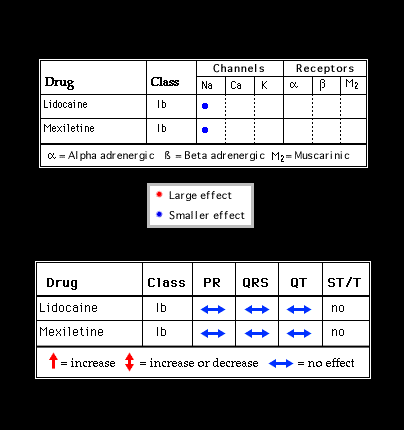The class 1b drugs, lidocaine and mexilitine, do not inhibit the potassium or calcium channels and do not bind with adrenergic or muscarinic receptors. In addition, these drugs act almost entirely on cells in which the sodium current is already partially depressed by factors which depolarize the resting membrane potential or by diseases which alter conductance of the sodium channel. They have little effect on normal cells and for these reasons, have little effect on the electrocardiogram.

